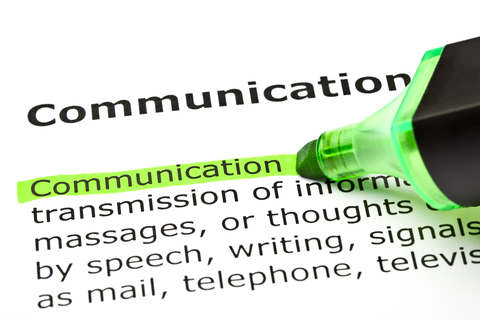Technology and the Dumbing Down of English Language Arts
As every middle and high school student knows, English Language Arts (ELA) encompasses skills in reading, writing, and verbal communication. Unfortunately, today many of these students are sadly lacking in those very critical skills. In the absence of basic ELA skills, not only is college acceptance more difficult to attain, many times just finding a decent part-time job can be a challenge. Employers rightfully expect young workers to be reasonably literate — with the ability to professionally interact with their customers, verbally and in writing (depending on the job function). But often that’s not happening.
My wife recently took a substitute teaching position at a local high school and quickly discovered that many students cannot effectively read script. How is that even possible? Aren’t we all taught writing in script in elementary school? Yes, but as the saying goes, “if you don’t use it you lose it”. So why aren’t they writing in script? Computer (and cell phone) keyboards are the culprit. Today’s millennials have grown up with keyboards, starting with those “educational” computer games for toddlers and continuing today with smart phones.
Why talk in complete sentences when I can text faster using acronyms, slang and emojis? LOL! Why handwrite my term paper when I can cut and paste faster from Wikipedia.com? Oh yes, that is happening more than you think. Why learn how to spell? Thank you Microsoft Word!
Today, kids’ lives revolve around computers (of all types). Look in any modern classroom. Chalkboards have been replaced by smartboards. Book shelves have given way to computer workstations. And frankly, virtually every new textbook includes a DVD. Ask any high schooler what the expression “dog-eared” pages means. Remember when you book-marked pages in that way? Your child will look puzzled. You don’t need to do that with the DVD.
In my public school days Cliffs Notes were the double secret weapon we all used to avoid reading long and boring books. Sorry, your teachers knew that trick already and warned against cheating. Today… think of the Internet as Cliffs Notes on steroids. Detailed summaries and analysis for virtually every popular book can be found on thousands of Internet pages. The better teachers know that and often use word and phrase searches to catch plagiarizers, but clever students have more options and can more easily hide their sources.
How can we reverse this disturbing trend? First, parents and teachers must accept the fact that many school-aged kids are seriously lacking in ELA skills. Recognizing the problem is half the battle. Next, kids should be encouraged to read more printed material at home; even if it’s newspapers and magazines. Books — any books — are preferred, though. Parents should open up engaging conversations with their children about the material they are reading.
In school, teachers should force students to handwrite more in classroom activities, and avoid computer use when absolutely not needed. Verbal presentation skills must be emphasized and practiced regularly. Cell phones should be stowed.
Thankfully, the current Scholastic Aptitude Test (SAT) includes a large section on writing, and weighs on the student’s overall score. Unfortunately, this essay section is considered optional now. School districts should mandate the SAT with essay version and create a curriculum that prepares students for the test. Colleges should also require the essay version.
Many colleges and universities offer remedial ELA courses to help otherwise bright and talented incoming freshmen prepare for college-level coursework. In some cases candidates are accepted on the condition that they first take and pass these courses. Frankly, thankfully colleges have taken the initiative on remediation, but is it really their role in the education process?
With today’s academic focus more on math, engineering, and computer sciences, ELA education has almost taken a back seat in schools. There is even an often-used acronym for it — STEM (Science, Technology, Engineering, & Math). STEM education is certainly critical to America’s future role in the global economy, but without proper ELA skills, what good is a computer programming whiz that can’t communicate effectively with his/her peers, managers and clients?
As most HR business people will attest, communication skills in candidates, from the recruiting and onboarding stage to off-boarding, will usually trump technical skills for new hires. That is why ELA is called an art — it is harder to teach to twenty-somethings and older. You may be very smart, but if you don’t present yourself that way then brains won’t matter.





